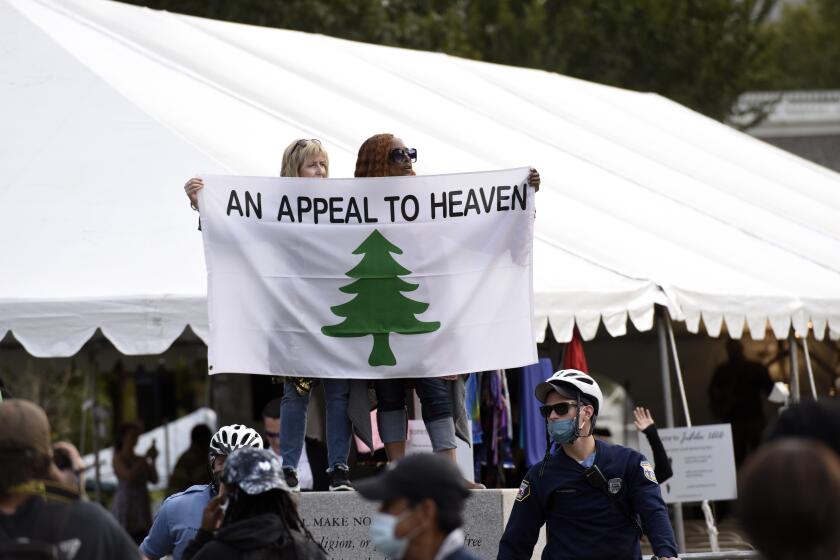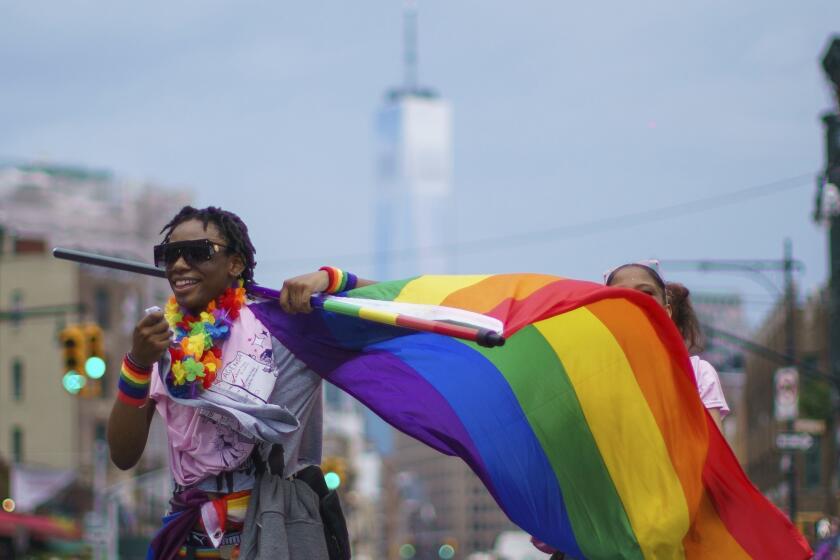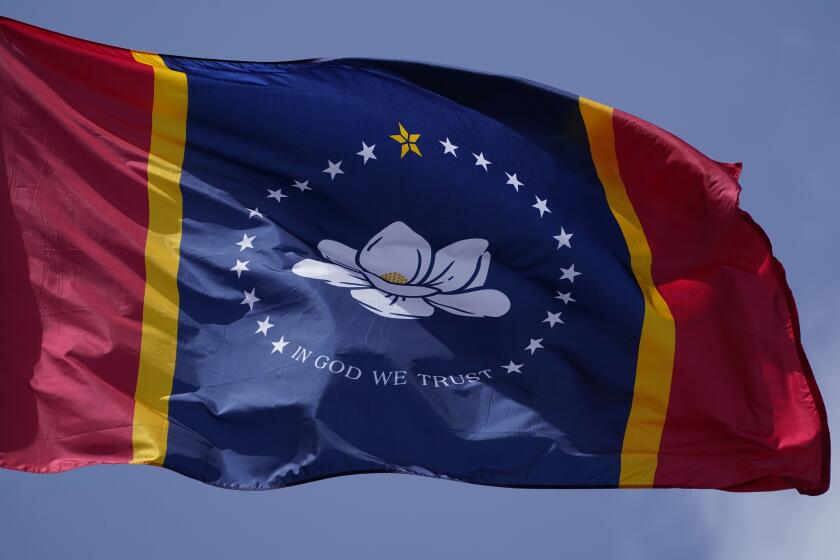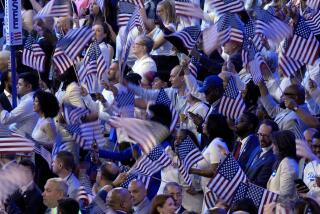Americans celebrate Flag Day every year, a holiday born in Wisconsin

- Share via
WAUBEKA, Wis. — Each June, the people of Waubeka venerate perhaps the nation’s most enduring symbol, celebrating Flag Day, a holiday that escapes the notice of many Americans.
But this unincorporated Wisconsin town about 35 miles north of Milwaukee takes the day seriously. After all, it lays claim to being the birthplace of Flag Day, thanks to a tenacious teacher in a one-room schoolhouse.
Here are some things to know about the obscure flag-waving holiday.
What is Flag Day?
Flag Day commemorates June 14, 1777, when the Continental Congress determined the composition of the nation’s banner: “Resolved, That the flag of the thirteen United States be thirteen stripes, alternate red and white; that the union be thirteen stars, white in a blue field, representing a new constellation.”
President Wilson issued a 1916 proclamation of June 14 as Flag Day and in 1949, President Truman signed the formal observance into law. And it falls during Flag Week, after another congressional dictum in 1966.
A Pine Tree flag, a symbol originally from the Revolutionary War but more recently linked to groups who stormed the U.S. Capitol, has been removed from the San Francisco Civic Center Plaza.
What about July 4?
Yes, Independence Day makes prominent use of the flag. But the emblem is important enough to have its own day, according to David Janik, a Waubeka native and second-generation president of the National Flag Day Foundation.
“July 4th, we’re celebrating our independence,” Janik said. “But on Flag Day, we’re celebrating the birth of our flag, which is the symbol of our country, the symbol that is seen all around the world as the helper, the people who won’t leave you out in the cold.”
Why Waubeka?
On June 14, 1885, Bernard J. Cigrand, an 18-year-old Waubeka native teaching at Stony Hill School, put a flag in his inkwell and assigned his students an essay about what the flag means to them. Cigrand left the next year for dental school in Chicago, but he never gave up his advocacy for a national day dedicated to the flag.
Cigrand realized his dream in 1916 when Wilson issued his proclamation.
Although he died in 1932, Waubeka never forgot Cigrand and in 1946, community leaders established the town’s Flag Day celebration, which has run continuously since then.
Pride Month is kicking off around the world with parades and festivals in cities large and small.
Any other ‘first’ Flag Days?
Yes. The earliest mention of Flag Day involves a man named George Morris who organized such a commemoration on June 14, 1861, in Hartford, Conn., marked by a patriotic program and prayers for Union Army success in a young Civil War. But apparently, the festivities were never repeated.
Pennsylvanians will challenge Cigrand’s coronation as “Father of Flag Day.” Pittsburgh native William T. Kerr began his advocacy in 1888 and a year later became national chairman of the American Flag Day Foundation, holding that position for a half a century. Kerr was among those standing beside Truman when he signed the Flag Day law.
As for the expected friendly rivalry, Janik said his father, the late Jack Janik, “took care of that.” The elder Janik traveled to Washington and lobbied Congress, which in 2004 adopted a resolution naming Waubeka “the birthplace of Flag Day.”
Mississippi taints its history as the battleground for democracy by celebrating Confederate Heritage Month.
What about the essays?
Along with the parade, the bands, the patriotism awards, the military honor guards and a dog named Harlow who turns 8 on Flag Day and sported a red, white and blue boater on her head, there are the essays.
In the spirit of Cigrand and his students of 139 years ago, the Waubeka Flag Day celebration includes an annual essay contest and draws entries from across the nation — this year from New York to Nevada and Wisconsin to Texas.
The Stars and Stripes “represent a nation where immigrants like my grandparents are welcomed, where diversity is celebrated and where justice is present for all,” wrote Neel Sood, a fourth-grader from Bridgewater, N.J.
Adell, Wis., seventh-grader Ryan Spang wrote that “the American flag represents unity. We are one nation, united by our similarities and differences. We support people in our communities in times of need and we cheer them on in times of achievement.”
In America, Old Glory represents more than just patriotism
Why isn’t it a day off?
Flag Day isn’t like Thanksgiving, Memorial Day and a smattering of other federal holidays that generally mean Americans can spend the day off work.
Instead, it’s officially recognized nationwide, and government services are still open and the mail still gets delivered. Only Pennsylvania marks it as a state holiday, allowing residents to stay home from work and school.
But another backyard barbecue isn’t required to feel the love in Waubeka.
“Our passion for the flag here is very deep,” Janik said. “The flag is the symbol of our country — it symbolizes individualism, success, loss, daring, chivalry. People need a compass to guide them, and the flag is a great compass.”
Crawford and O’connor write for the Associated Press. O’Connor reported from Springfield, Ill.
More to Read
Sign up for Essential California
The most important California stories and recommendations in your inbox every morning.
You may occasionally receive promotional content from the Los Angeles Times.













